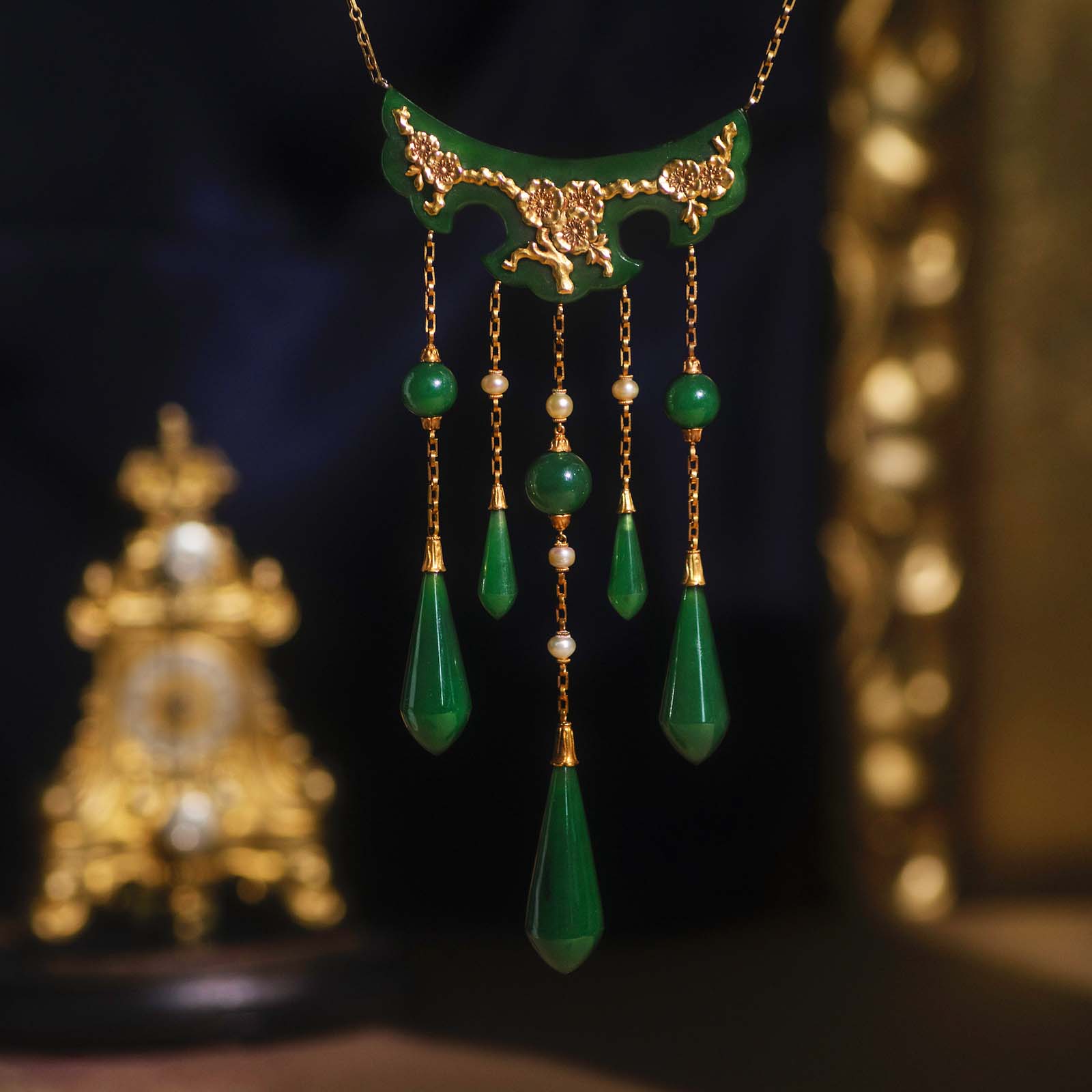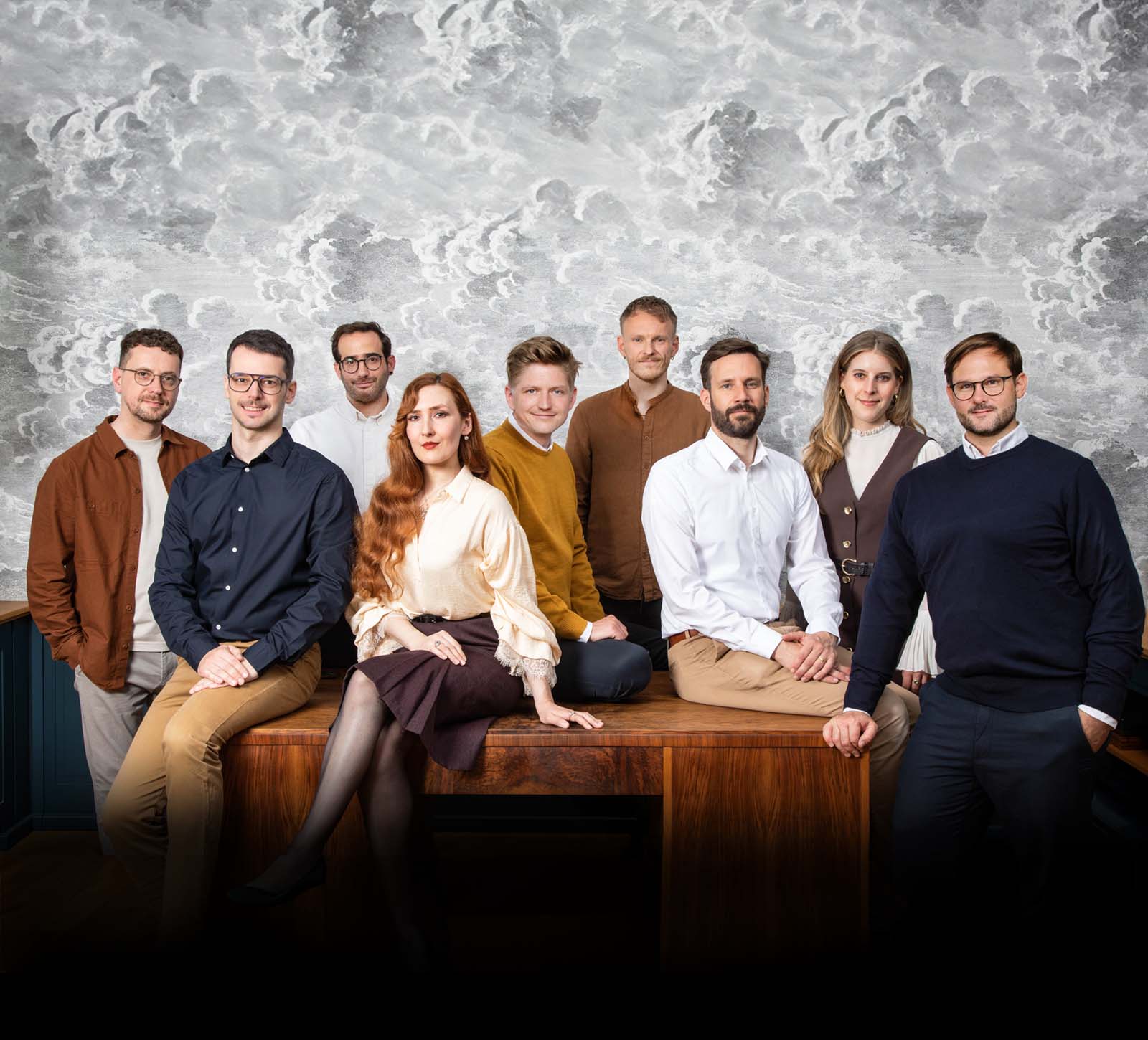t is one of my favourite things to browse auction catalogues and antique markets for special treasures. Among the many pieces on offer, there are almost always specific objects that rouse my interest due to their age or the quality of their craftsmanship – even if sometimes, I myself don't yet know what precisely they are.
The Agate Chimpanzee
One of my most beautiful finds was a small chimpanzee carved of agate, which roused my interest when it was offered at auction in Cologne, where it was rather poorly described. The quality of this small sculpture was exceptional. Its eyes were made of rose cut diamonds, and it was the naturalistically rendered fur which made me place a bid. In the end, I won the unusual little animal.
Back in Berlin, we could begin to do some research and found a nearly identical sculpture in Queen Elizabeth's collection at Windsor Castle. It was a Fabergé figurine! With this attribution, our little monkey soon found a place in an important Chinese collection of precious animal sculptures.
The Swedish Tiara
Some years ago, a trip to Stockholm led me, more or less by chance, into an auction room at the time of a big jewellery sale. I registered, watched and bid on the pieces I liked. Among my purchases was a small, golden tiara with large natural pearls, dating to 1820.
Its last owner had left a note among with the piece, listing all previous wearers known to her. The diadem had been passed down for generations. Since it was passed from mother to daughter, it did not remain within a single family – rather, it followed the daughters into new families. The history of this piece, the balls and dinners it must have seen, makes one wish that this more than 200 year old and well cared-for treasure could talk.
As an art historian in the trade, one functions as the link between an object and its next owner. But how does one manage to rouse a potential buyer's interest in order to preserve and pass on the objects to future generations? In my experience, the more one can say about an object, the more interesting its story is, the better. That is why it is our aim to offer easy access to historical jewellery and open as many doors and windows as possible where history is concerned.
The Ring from the Middle Ages
For me personally, medieval objects are especially fascinating – not only because they are so rare, but also because they are evident of an early global trade which fundamentally disproves our notion of the 'dark ages'. There is one ring in particular which has been etched into my memory. It was a jewel from the era of the Gothic cathedrals, of knights and nobles, wearable and museum-worthy at once.
The high-carat gold ring held a dark blue sapphire in a cabochon cut. It dated to the years in which Marco Polo (1254–1324) travelled from Venice to India, and the stone was evidence as to the fact that sapphires had already been imported to Europe by far-travelled merchants back then.
The shape of the rough gemstone also had a decisive influence upon the shape of the ring itself. None of the extant rings of this type, which are usually kept in museums, is like the other, since the shape of the only slightly cut gemstone determines the shape of the ring face. The design of our ring was also closely related to the architecture of its time: the ring head with its almost symmetrical gallery and clearly defined edges was reminiscent of the keystone of a medieval arch.
The Boivin Necklace
During my search for interesting jewellery pieces, I sometimes also discover objects that have not been treated too kindly by history. These are the pieces we try to save with our team of specialised craftspeople, to return them to the state they were originally meant to be in. We also try to improve on poorly executed prior conversions or repairs.
Recently, we were able to acquire a necklace from one of France's best-known goldsmiths thanks to an auctioneer friend in Notting Hill. There was something a little strange about this gold and spinach-green jade necklace by René Boivin (1864–1917), but its origin made me buy it nonetheless.
Japanese wood cuts had a decisive influence upon the fine arts in late 19th century Paris. Their motifs of exotic florals and the reduced, flat manner of depiction were one of the key influences upon the development of Art Nouveau. Boivin, too, was inspired by it as he designed the necklace with its enchanting motif of cherry blossoms and knotted branches. At the time, his design was at the very height of artistry.
An enquiry into the possible date of the unusual jewel led to a surprising find: a depiction of our cherry blossom necklace in a publication dating to 1911! It proved that our necklace had been altered since. Three of its jade pendants were missing. Perhaps it had been altered to adjust it according to a later fashion, but unfortunately the alteration had not been executed convincingly. In fact, it was the reason for my initial irritation, since the overall impression was no longer one of harmony.
In the past, too, jewellery was often altered as the ways of wearing it changed and the currents of taste rendered unfashionable what had once been modern. Sometimes, these alterations are irreversible, but sometimes it is possible to return to a piece's original design. Based on the photo of the necklace from the year of its manufacture, our gem cutter in Idar-Oberstein cut new jade drops which were identical with the original ones in terms of material, size and shape. Thus we could return the altered necklace to its original state and honour the artist's original design.
The Ring Made of a Button
In another case, however, we decided to retain a later addition. It was a ring, created from a waistcoat button from the sapphire suite of Augustus the Strong of Saxony.
The button had been created around 1720 in Johann Melchior Dinglinger's workshop in Dresden, and it consisted of a large sapphire in gold surrounded by halo of diamonds in silver settings. Until 1924, it was exhibited in the Grünes Gewölbe at Dresden. In that year, however, the House of Wettin received a selection of precious objects as part of acquittal for the seizure of the dynastic properties of the former ruling houses of the German Empire, here the previous Kingdom of Saxony. Among them, there were two hundred gem-set buttons from their ancestor's jewelled suites.1
The Wettin family immediately began to sell the family heirlooms, and thus one of the buttons was acquired by Helene Bechstein (1876–1951) of the famous piano manufacturer's family. She added a golden band to the button to turn it into a ring. The golden ring band had therefore been a part of the jewel for a century and told me more about the history of what had once been a button. It very quickly found its way into a significant British collection.
But it's not only the spectacular pieces that delight me. The small but well-constructed pieces equally demonstrate the care with which the craftspeople of previous generations realised their works, and the refinement and perfection to which some jewels have been designed. Beautiful diamonds in old cuts that are no longer in use today, such as the classic old European cut or the older Peruzzi or Mazarin cuts, often appear much more individual and less harsh than modern brilliant cuts, which is why I particularly like them. To discover gemstones from famous or long-depleted mines, such as Burmese rubies or sapphires from Cashmere, these are moments of happiness in the everyday life of an antique jewellery dealer.
But I am also fascinated by old techniques of manufacturing, now largely forgotten, such as the art of millegraining, the dramatic effect of foiling diamonds with silver, or the use of coloured enamels upon guillochéd grounds. In all these methods, one sees the love of detail which makes antique jewellery so special. And so, even affordable pieces can tell wonderful stories: whoever listens to them becomes a curator and keeper of a piece of history. After all, quality is not always a question of the price tag where antique jewellery is concerned.
1 For information on the compensation of the princes, see the details provided on the website of the Dresden Museums as well as the article by Dirk Syndram: On the History of the Baroque Jewellery Sets, in: idem (ed.): The Jewels of the Kings. Jewellery Ensembles of the 18th Century from the Green Vault, Munich 2015, pp. 9–45, here p. 45.
Simon Michael Hofer
As an art historian, I am interested in objects with the potential to tell an exciting story that goes beyond mere information about the material and the carat weights. Where did a piece of jewellery originate? Why does it look the way it does and does the choice of gemstones used convey an additional layer of meaning? Pursuing these questions is our daily task and challenge - and at the same time a great pleasure!










